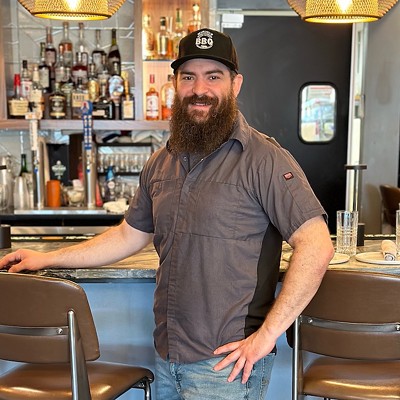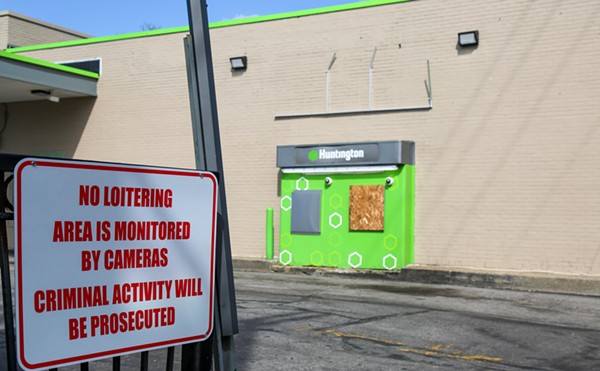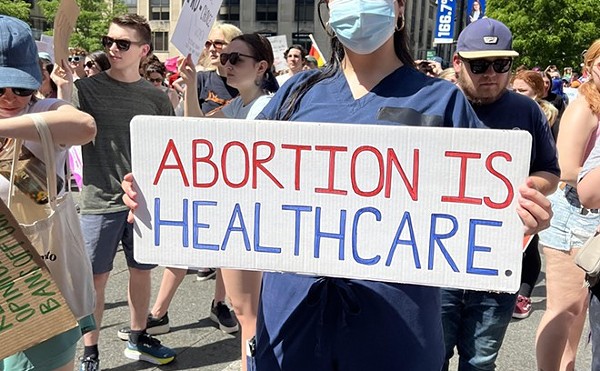It was December 1978. The nine students wounded at Kent State University on May 4, 1970, along with the families of the four slain students, were suing the State of Ohio in federal court. It was the culmination of a seemingly interminable search to find someone responsible for the tragedy, an eight-year legal odyssey encompassing both civil and criminal cases winding through state and federal courts.
Everyone involved wanted the nightmare to be over. The parties had even agreed on a financial settlement: $675,000, the bulk of which would go to former Kent State student Dean Kahler, who had been paralyzed from the waist down after being shot in the back by members of the Ohio National Guard.
There was just one problem. The defendants -- the Guardsmen, Governor James Rhodes, former Adjutant General Sylvester Del Corso, and former Kent State University President Robert White -- didn't want to apologize. Nor did they feel they needed to.
"The money wasn't important to [the plaintiffs]," says Thomas. "An apology was the part of the settlement that was important."
Quite simply, they wanted somebody to say they were sorry.
Almost since the moment the first shot was fired at Kent State 30 years ago, there has been a quest to determine why the shootings happened, to find out exactly who was responsible for the killing of four unarmed students by the Ohio National Guard. Yet, after inquiries by the Ohio State Highway Patrol, the FBI, a presidential commission, and a special state grand jury, and testimony in a state criminal trial, testimony in a federal grand jury, a federal criminal trial, and two federal civil trials, no one has ever been held accountable.
That legal limbo is one of the reasons Kent State has remained a lightning rod for so long. Despite all the time and energy expended in a lengthy legal labyrinth, definitive answers to the most basic questions about the shooting are still few and far between, allowing speculation and innuendo to fester and flourish for three decades.
Indeed, while the gunfire lasted 13 seconds, the brawl over who to blame has never really ended.
The tone for this confusion was set early, with a special state panel that Ohio Governor James Rhodes ordered state Attorney General Paul Brown to convene several months after the shooting. The special grand jury, empaneled in late September 1970, eventually called more than 300 witnesses. The next month, it issued indictments against 25 people -- almost all of whom were Kent State students, former students, and faculty members. The grand jury also issued an 18-page report excoriating university administrators for their handling of the events that led to the arrival of the Ohio National Guard.
Incredibly, the panel let the shooters and their superiors completely off the hook, deciding that members of the Guard could not be criminally prosecuted for their actions.
"It should be made clear that we do not condone all the activities of the National Guard on the Kent State University campus on May 4, 1970," the report noted. "We find, however, that those members of the National Guard who were present on the hill adjacent to Taylor Hall on May 4, 1970, fired their weapons in the honest and sincere belief and under circumstances which would have logically caused them to believe that they would suffer serious bodily injury had they not done so."
The grand jury's report was polarizing and controversial, in no small part because it completely contradicted the findings of both the FBI and the President's Commission on Campus Unrest, a panel set up by Richard Nixon at the end of May 1970 in the aftermath of the shootings at Kent and Jackson State University, where two students were killed on May 14. Both determined that the Guard, at the very least, shared responsibility for the killings at Kent.
In a report issued at the end of September 1970 -- two weeks before the Ohio grand jury's findings were announced -- the President's panel, known as the Scranton Commission, made it clear there was plenty of culpability to go around. "Those who wreaked havoc on the town of Kent, those who burned the ROTC building, those who attacked and stoned National Guardsmen, and all those who urged them on and applauded their deeds share the responsibility for the deaths and injuries of May 4," the commission reported.
But it also severely criticized the Guard and its leadership for their decision to break up the noon rally on Monday: "Even if the Guard had the authority to prohibit a peaceful gathering -- a question which is at least debatable -- the decision to disperse the noon rally was a serious error. The timing and manner of the dispersal were disastrous. Many students were legitimately in the area as they went to and from class . . . The rally was peaceful, and there was no apparent impending violence. Only when the Guard attempted to disperse the rally did some students react violently. The indiscriminate firing of rifles into a crowd of students and the deaths that followed were unnecessary, unwarranted, and inexcusable."
The FBI report, a summary of which was first reported by The Akron Beacon Journal in July 1970, went even further in implicating the Guard: "There was no request from any Guardsman for permission to fire his weapon. No Guardsman claims he was hit with rocks immediately prior to the firing. The Guardsmen were not surrounded."
But even that was minor league compared to this doozy, dropped in the same report: "We have some reason to believe that the claim by the National Guard that their lives were endangered by the students was fabricated subsequent to the event."
The state grand jury's report was deemed so prejudicial to potential jurors in the state criminal proceedings that, in early 1971, it was ordered destroyed by a federal district judge -- William Thomas.
"As long as that existed, it didn't seem to me that there could be a fair trial," he says.
The search for guilt among the indicted "Kent State 25" didn't go very far. Only one among the indicted students, ex-students, and faculty members was convicted, of interfering with a firefighter during the burning of the ROTC building. Two defendants pleaded guilty to first-degree riot, only to have their charges later dismissed. All the others had their charges dropped due to lack of evidence.
The search for criminal responsibility was far from over, however.
Initially, the federal government balked at pressing charges. In early 1971, Justice Department officials recommended to Attorney General John Mitchell that a federal grand jury not be sought, a decision Mitchell made official in August 1971. One of the problems was that the FBI had no way to determine which members of the Guard shot which student. And there was a huge legal hurdle in trying to prove the Guardsmen's intent to deprive the students of their civil rights.
Still, public and political pressure mounted over the next two and a half years to reopen the investigation. And in August 1973, four months after Elliot Richardson took over as U.S. Attorney General, that's exactly what happened. By December, a federal grand jury had been empaneled and would eventually hear testimony from 173 witnesses.
In late March 1974, eight Guardsmen were indicted, five on felony counts of violating the students' civil rights, charges that carried potential life terms in prison.
But the trial that followed was far shorter than the voyage that got the case to court. In November 1974, less than two weeks after the Guardsmen's trial began, U.S. Federal District Judge Frank Battisti threw out the case. The problems that had arisen in the Justice Department's decision to not seek a grand jury in 1971 still plagued the prosecution, and the government, Battisti said, had simply not proven its case.
While the issues of criminal responsibility played out, the nine wounded students and the families of the four who were killed were pursuing civil cases in state and federal courts.
Like the criminal investigations, the civil cases began almost immediately after the shootings in 1970. The victims first tried suing the State of Ohio in state court -- a strategy that was derailed in 1973 when the U.S. Supreme Court refused to hear the case, thereby upholding lower court rulings that said the State of Ohio couldn't be sued in state court without its consent. The victims also attempted to sue Guard members, the governor, and Kent State President Robert White as individuals in state civil court. But that move was ruled a similar violation of sovereign immunity, this time by the Ohio Supreme Court.
The victims had better luck in federal court, where they also filed civil claims. After several lower court rulings went against them, they appealed all the way to the U.S. Supreme Court, which in 1974 unanimously ruled that the wounded students and families of the dead could sue in federal court.
So in May 1975, a civil case against Guard members, their officers, Rhodes, Del Corso, and White opened in Cleveland, presided over by U.S. District Judge Donald Young. The trial lasted almost four months, with more than 100 witnesses called to testify. In August, after five days of deliberation, a jury voted 9-3 against the nine wounded and the parents of the four slain students.
Even then, the victims would not give up. In 1976, they appealed the case to the U.S. Sixth Circuit Court of Appeals in Cincinnati. Their plea was based on several major issues, but the one that mattered most to the court was Judge Young's failure to question a juror who had been threatened during the trial. "No litigant should be required to accept the verdict of a jury which has been subjected to such an intrusion," the appeals court wrote in a September 1977 decision ordering a new trial.
That kicked the case back to Young, who tried to broker a deal for a settlement. But the victims weren't happy with the way Young had conducted the first trial, and it soon became clear that there was no way he could get both sides to agree to finally end the matter.
Young decided to step down from the case -- which is how, in the fall of 1978, it landed on the desk of Judge William Thomas. It was a good fit. Thomas had been appointed to the federal bench in 1966, after years of working as a defense attorney and a common pleas judge in Geauga and Cuyahoga counties. He was known as a particularly scrupulous, fair judge, one whose decision to destroy the special state grand jury's report in 1971 gave the plaintiffs confidence that he would be easier to work with than Young.
By late fall 1978, a settlement was indeed coming together. The amount of money had been agreed upon. There was just the matter of the apology. The victims wanted an admission of responsibility, something that said somebody was sorry. But it was clear the defendants -- the Guard, the governor, the former president of Kent State -- were not going to say they were sorry. They had, after all, already prevailed in court once, and almost everybody believed they would again if the case went before another jury.
So it became Thomas's job to craft an apology that wasn't really an apology. For several days, lawyers for both sides stood over his shoulder in his chambers in the federal courthouse in Cleveland as he typed out a mutually acceptable statement. "We actually did it a word at a time," he says.
Thomas, 88, retired from the bench a couple years ago and now lives in Judson Manor in University Circle. Among the many big trials he handled, Kent State was one of the most prominent. "Certainly as far as civil cases go, I think this was at the top of my list," he says.
He still has the original settlement statement, signed by Rhodes, among others, framed and given to him by lawyers in the case. Ever the judge, he is reticent to reveal his opinion about the final accord. "I did my ruling from the bench."
The settlement was announced on January 4, 1979. In the end, it was and was not an apology, depending on who was interpreting it. Officially, it was a "statement of regret." Today, it reads like a cipher of remorse:
"In retrospect, the tragedy of May 4, 1970, should not have occurred. The students may have believed that they were right in continuing their mass protest in response to the Cambodian invasion, even though this protest followed the posting and reading by the university of an order to ban rallies and an order to disperse . . . Some of the Guardsmen on Blanket Hill, fearful and anxious from prior events, may have believed in their own minds that their lives were in danger. Hindsight suggests that another method would have resolved the confrontation . . .
"We devoutly wish that a means had been found to avoid the May 4 events culminating in the Guard shootings and the irreversible deaths and injuries. We deeply regret those events and are profoundly saddened by the deaths of four students and the wounding of nine others which resulted. We hope that the agreement to end this litigation will help to assuage the tragic memories regarding that sad day."
After the statement was released, both sides declared victory. The families and former students claimed the monetary award and characterized the statement as an admission of responsibility by the Guard and the officials who were in charge that day.
The defendants still claimed they hadn't apologized. Former Ohio National Guard Adjutant General Sylvester Del Corso insisted there had been "no apology" and "no admission of liability."
Even after eight and a half years, nobody could agree.
It was still Kent State.
Andrew Putz can be reached at [email protected].













